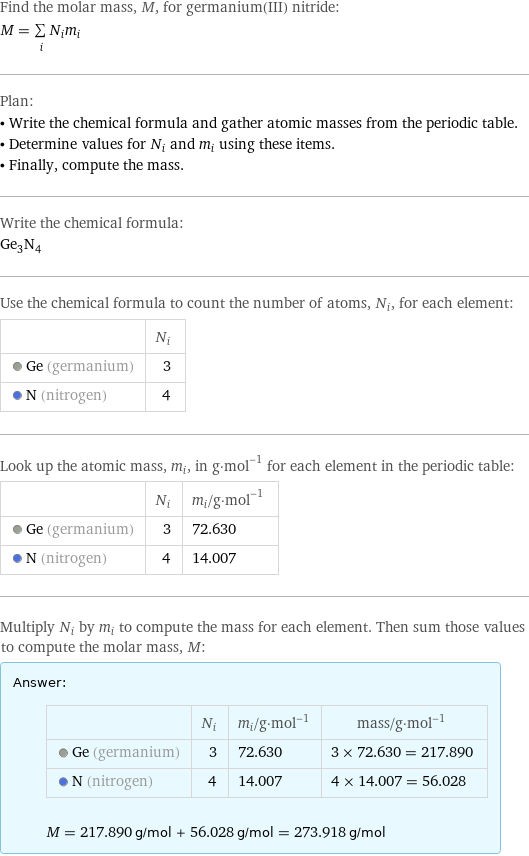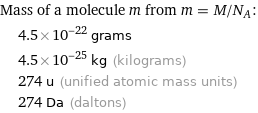Input interpretation

germanium(III) nitride | molar mass
Result

Find the molar mass, M, for germanium(III) nitride: M = sum _iN_im_i Plan: • Write the chemical formula and gather atomic masses from the periodic table. • Determine values for N_i and m_i using these items. • Finally, compute the mass. Write the chemical formula: Ge_3N_4 Use the chemical formula to count the number of atoms, N_i, for each element: | N_i Ge (germanium) | 3 N (nitrogen) | 4 Look up the atomic mass, m_i, in g·mol^(-1) for each element in the periodic table: | N_i | m_i/g·mol^(-1) Ge (germanium) | 3 | 72.630 N (nitrogen) | 4 | 14.007 Multiply N_i by m_i to compute the mass for each element. Then sum those values to compute the molar mass, M: Answer: | | | N_i | m_i/g·mol^(-1) | mass/g·mol^(-1) Ge (germanium) | 3 | 72.630 | 3 × 72.630 = 217.890 N (nitrogen) | 4 | 14.007 | 4 × 14.007 = 56.028 M = 217.890 g/mol + 56.028 g/mol = 273.918 g/mol
Unit conversion

0.27392 kg/mol (kilograms per mole)
Comparisons

≈ 0.38 × molar mass of fullerene ( ≈ 721 g/mol )

≈ 1.4 × molar mass of caffeine ( ≈ 194 g/mol )

≈ 4.7 × molar mass of sodium chloride ( ≈ 58 g/mol )
Corresponding quantities

Mass of a molecule m from m = M/N_A: | 4.5×10^-22 grams | 4.5×10^-25 kg (kilograms) | 274 u (unified atomic mass units) | 274 Da (daltons)

Relative molecular mass M_r from M_r = M_u/M: | 274